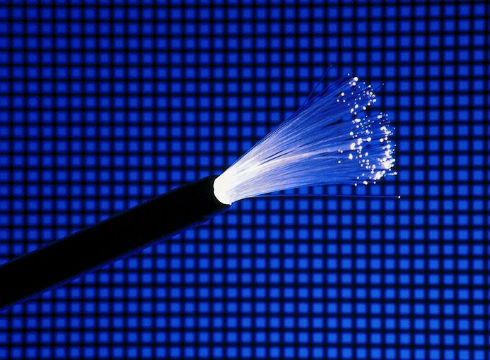Researchers in Germany have broken the data transmission speed record, which could potentially open a new era for the speedy transmission of broadband data over backhaul networks.
The breakthrough was achieved by T-Labs, the research arm of German telecom giant Deutsche Telekom, which is also the owner of the mobile operator T-Mobile.
OSIRIS Project
The Telekom OSIRIS (Optically Supported IP Router Interfaces) research project apparently achieved the first ever 512Gbps (Gbit per second) transmission over a single optical-fibre wavelength channel.
What makes this even more noteworthy is they did it outside of laboratory conditions, using “real world” conditions in the Telekom optical network. The data was transmitted over a distance of 734 km or 456 miles (Berlin to Hanover and then back to Berlin).
Whilst this sounds impressive, the researchers did note that they were only able to achieve a slightly slower usable bit rate of 400 Gbit/s.
Still this is quadruple the current maximum speed of 100Gbps that optical fibre can achieve when used as the backbone of a data network.
Multi-Lane Motorway
“When using all of the channels of an optical fibre, much like a four-lane highway, the new process permits a throughput of up to 24.6 Tbit/s (24,600,000,000,000 bit/s) to be attained on the maximum of 48 available channels (comparable to 48 lanes) of the data highways,” said T-Labs. “A collection of 3,696 CDs could thus be transferred over a single optical fibre – a strand thinner than a human hair – at the same time. With the new method, existing networks can double their current transmission capacity by merely replacing the technology in the terminal stations.”
“Together with our technology partner Alcatel-Lucent and the experts at Telekom Network Production, we are very proud of having attained this tremendous transmission performance over the Internet under real-world conditions,” said T-Labs Manager Heinrich Arnold.
“With them, we have successfully developed an innovative method by which the transmission capacity of optical fibre can be increased significantly in network operation,” he added.
The researchers said that they were able to achieve data transmission at a speed of 512 Gbit/s (400 Gbit/s usable bit rate) on a 100 GHz wavelength channel over a distance of 734 km, thus demonstrating a spectral sensitivity of 5 bits/s/Hz in the Deutsche Telekom network.
They apparently used “innovative transmission technology with two carrier frequencies, two polarisation planes, 16-QAM quadrature amplitude modulation and digital offline signal processing for the equalization of fibre influences with soft-FEC forward error correction decoding in the receiver.”
Backhaul Breakthrough?
 This development is not really aimed at fibre-based broadband networks, it is actually aimed at the backbone networks behind them, which tend to carry the majority of data flowing through a region or country. BT for example is known to have spent £10bn plus transforming its backhaul network under the “21CN” project.
This development is not really aimed at fibre-based broadband networks, it is actually aimed at the backbone networks behind them, which tend to carry the majority of data flowing through a region or country. BT for example is known to have spent £10bn plus transforming its backhaul network under the “21CN” project.
This advancement does however demonstrate the increasing importance of fibre as a data transmission medium.
But there are still an awful lot of copper-based networks in existence, not least of which is BT’s 120 million kilometre (74.5 million mile) national network. Of course copper-based networks are increasingly vulnerable because of the high value of copper, which makes it an attractive target for theft.
Also, despite advances such as ADSL2+ and VDSL2 etc, fibre is a much more “future proof” material, bearing in mind advances like the above.
BT is of course spending up to £2.5 billion to replace copper lines with fibre in its customer-facing network, and it aims to roll out fibre to roughly two thirds of the UK by the end of 2014.




